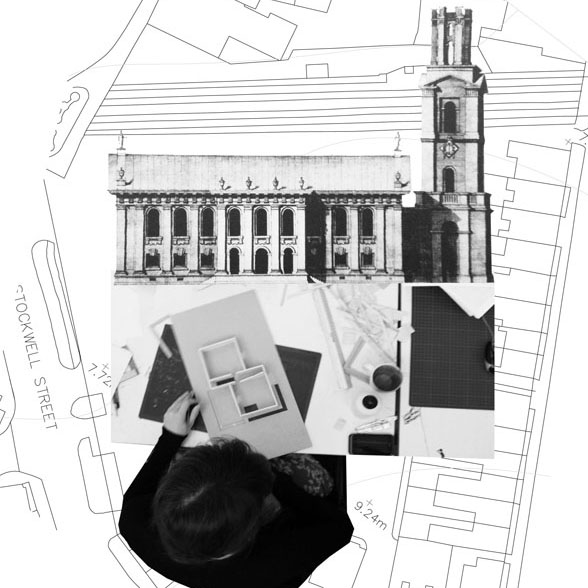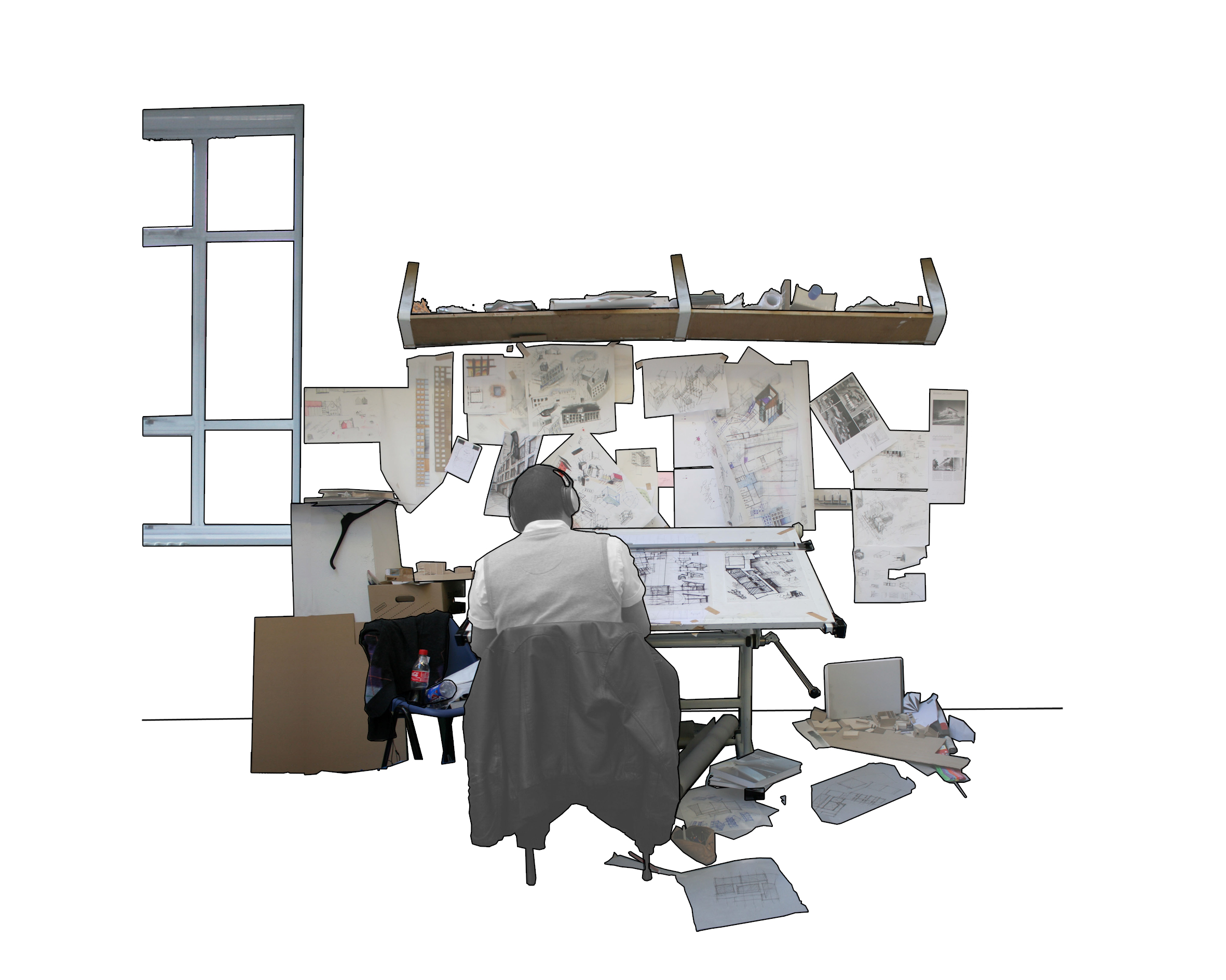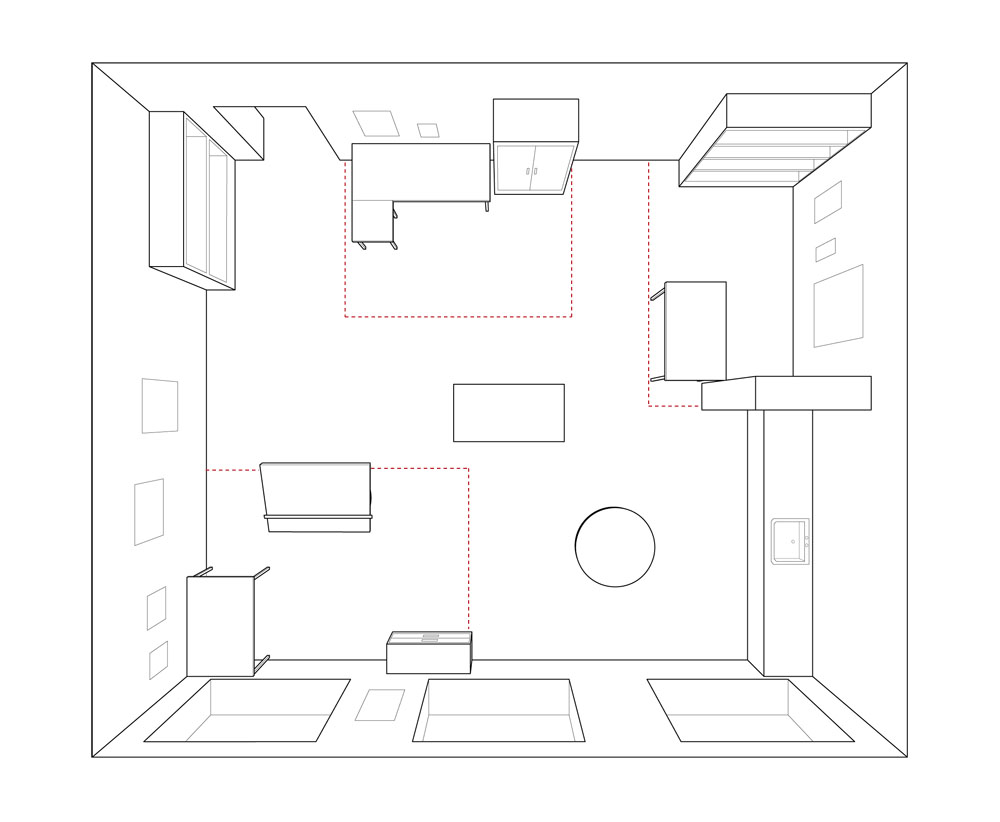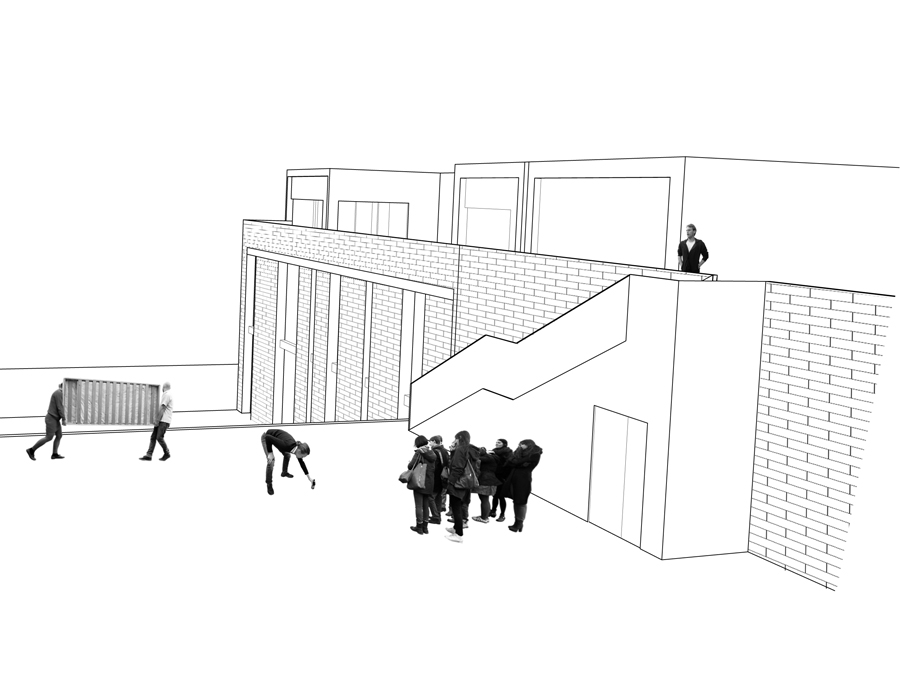Architecture Projects
Below are some of my university projects. There are descriptions of each stage of the project, click on the images to find more drawings and information on the topicBA Hons Project
The Design of Greenwich Architecture School
This project, based on the real brief for the Greenwich Architecture School, investigated the idea of context driven design and the responsibilities of architect. The brief involved a large plot that needed to accommodate facilities for four faculties: Architecture, Graphic Design, Construction and Interior design. A library, staff offices and two lecture theatres were specified a long with the opportunity for public enterprise. The site was on the western edge of Greenwich Park, facing St Alfege’s Church (designed by Nicholas Hawksmoor), which became a significant influence on the design.
Concept and Strategy
The idea started with a consideration of the architect’s responsibility to the street and public domain as well as the immediate client. Built work effects the atmosphere of the street and contributes to the identity of neighbourhoods and the city as a whole. So I became concerned with the duality of the building “envelope” as this threshold mediates the requirements of the interior environment as well as the buildings relationship to context. I began experimenting with fixtures on one side of the wall and proportions of the golden ratio on the other to reflect the classical context.
Development and Sketches
The building developed around the courtyard, which acted as a device to get light into the deep footprint, aid ventilation and as a way to orientate the building’s circulation. The idea originated from the iconic courtyards of the Maritime buildings nearby as well as Greenwich Market’s enclosed yard. The development shows consideration of how to mediate the level change and restore the hard edge to the street front while providing public space and shelter.
Construction Design
Using Luis Kahn’s Exeter Library and various Sergison Bates buildings as precedents the building was constructed on a concrete frame with brick and timber infills. The interior uses the timber to highlight areas where human contact is expected and workspaces are designed into the structure to highlight the significance of the exterior wall. This portion of the section undergoes the most rigorous detailing development as it epitomises the aim of the concept. Service cores are placed near each corner of the mass that add lateral stability to the construction, further aided by the lecture theatres which also benefit from the acoustic insulation of the concrete.
The Proposal
The final design demonstrates much of what was set out to be achieved. The hard edge is restored to the street with a colonnade to give back some public space, enclosing public shop fronts and the school’s entrance. The plan becomes more private as you move further into the building with a central circulation space designed to allow the faculties to interact across floors. The facade is modular, allowing a superficial mirror of the classical context whilst adapting to the requirements of the interior functions. The result is a institutional presence that contains open spaces and robust materials to maximise flexibility, durability and interaction.
Masters Project
The conversion of St Johns Primary School
This involved a live project in Perth, converting a redundant school into affordable artist studios. The study evolved considerably over the year, beginning as an investigation into workspaces and thresholds before becoming a feasibility study of a staged occupation of the building. The accompanying thesis compares the idea of a city as a living machine to a co-operative business model. The final proposal is a hypothetical model for how a building could be re-inhabited, re-furbished and extended through incremental investments from business and community. Crowd sourcing for architectural intervention.
St John’s Site
The existing building sites on the Northern edge of Perth where the city grid begins to break down. To it’s South and East is where commercial units start and to West and North are residential areas. The school was built in the 1930’s as a Catholic Primary school. The separate entrances for boys and girls is still evident, separated severely by an abrupt level change. This shift in level creates significantly different atmospheres on either side of the site, on one side the building seems barely more than domestic and on the other it is overbearing and institutional. In its origin there was a flat roof, creating almost art-deco feel to the facade, but it has since been topped with a hipped pitch.
How Space is Used
The initial study was concerned with how artists inhabit space. I was interested in how physical and implied thresholds determine territory and how such devices can be used to create communal spaces. Ultimately this became only a small portion of the thesis but it had influence on the subsequent strategies. Studies into designed and undesigned artist studios were made, comparing the conflicting notions of whether the architect should design for specific usage or whether inhabitants will use space as they see fit regardless of intention. Should function be designed into a space or should it be adapted by the user?
Community and Threshold
Our research unit was concerned with social space. “Community”, what it meant and how it affected architecture was a regular topic of conversation in our projects. We often referenced Hertzberger and his views on how the built environment can facilitate the thriving of communities, thus creating happier and more productive environments. My studies examined how he would use threshold spaces to intuitively cause or withhold interactions between his buildings inhabitants. This is particularly potent for structures that contain many functions like St John’s would have.
Thesis Proposal
The thesis evolved into a consideration of how architecture is funded as well as inhabited. If the project of St John’s was to move forward it needed to be grounded a scenario of how it was to be paid for. There were many possible sources of income, some charities and government projects could help, but there was also the possibility of private investment. My studies confirmed that many artists will work where ever space is available, thus inhabitation could have been nearly imminent. New facilities would be added as new investors became involved, essentially creating continual crowd-funding. This line of thinking was influenced by the economic climate of the time, trying to solve the problem of stagnant architectural development through community involvement. Architecturally it required a strategy for which areas of the building could be used at what time and at what stage intervention would be required. The proposed strategy is purely theoretical, serving as an example culmination of various possible influences. Outlining immediate inhabitation through to the development of a full community arts and housing centre.












